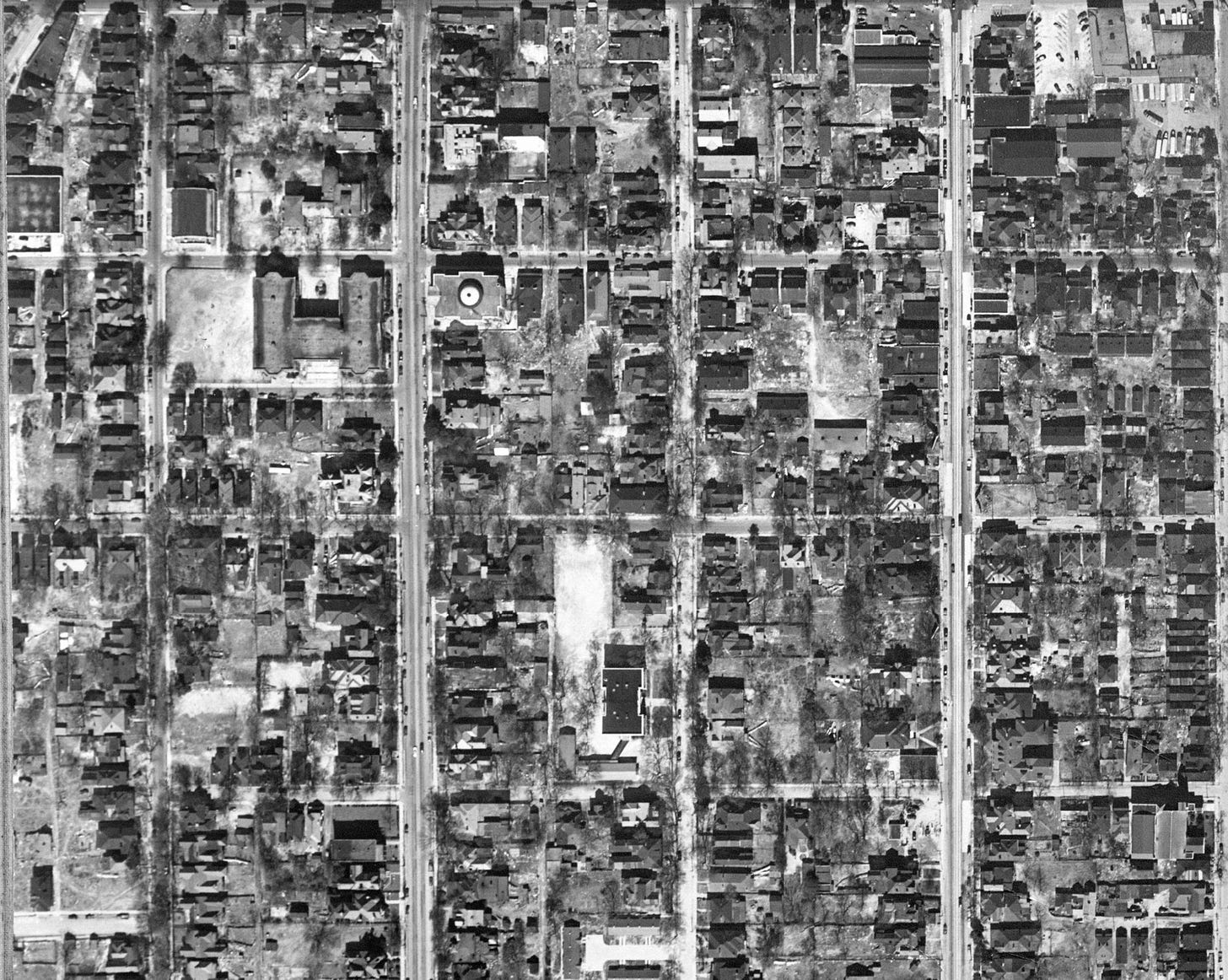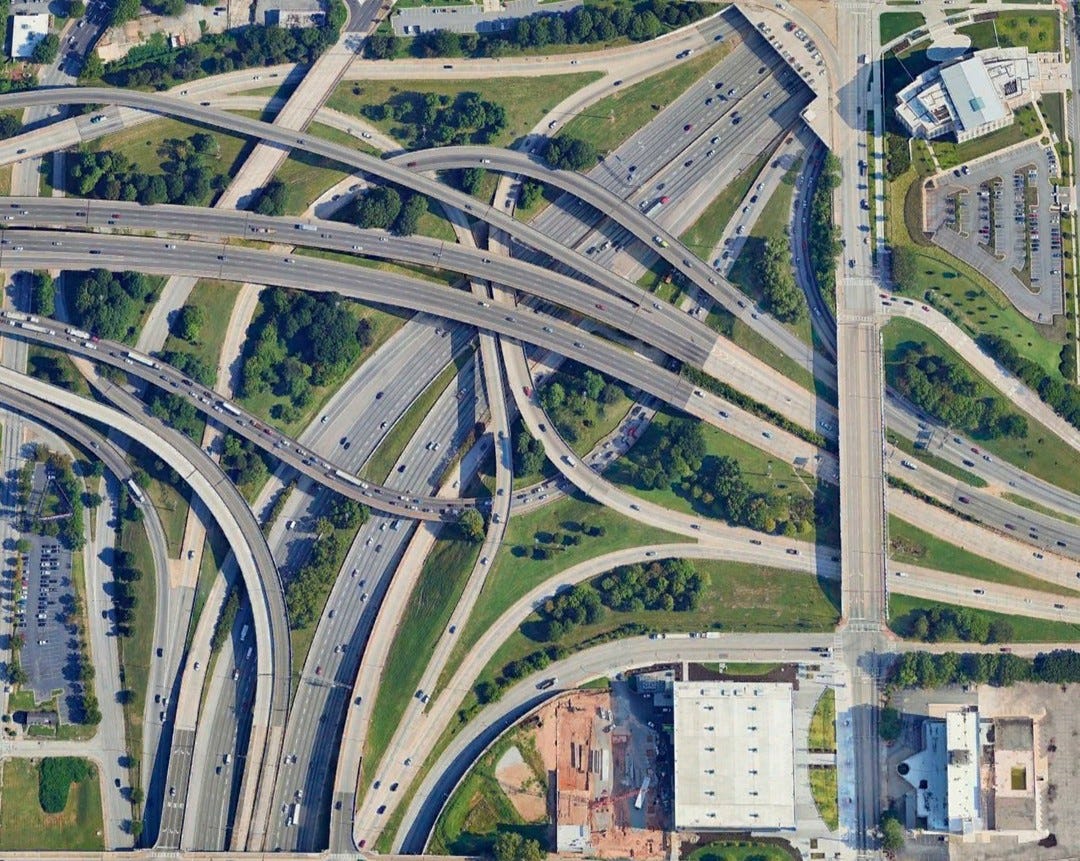A freeway interchange as "urban renewal" in Atlanta
The mistakes of Atlanta's Urban Renewal period have no yet been addressed as well as they should be. It's time to do so.
This area, which lies immediately south of Downtown Atlanta, is bounded on the north by Memorial Drive, on the east by Fraser Street, on the south by Fulton Street, and on the west by Central Avenue.
First photo: 1949 (GSU Digital Collections)
Second photo: 2024 (Google Maps)
This is part of the area dubbed Washington-Rawson during the post-WW2 Urban Renewal period. It wasn't the name of a distinct, existing neighborhood -- it was a name for a project that defined the blocks to be demolished for new development. The original plan appears to have been to displace the current population and build a place for wealthier (and whiter) residents. probably to compete with suburban flight.
It was, of course, a horrible plan that erased neighborhood fabric and uprooted thousands of residents, hitting immigrant and Black communities the hardest. The fact that it didn't actually turn out as hoped is small comfort. What did get built instead was a giant I-75/85/20 interchange, cutting off communities from each other and from walkable access to many destinations.
The following are passages from Daniel Judt's “Limitations of the Past: Atlanta’s Stadium and Atlanta’s Image, 1960-2015.” Yale Historical Review (Spring 2015)
"While the press and the Hartsfield administration maintained that clearing Washington-Rawson would get rid of one of the city’s worst slums, some saw the area as merely lower-middle class. Washington-Rawson was not a single neighborhood, but an intersection of two streets within the parameters of the urban renewal project. (Renewal projects were often named after streets.) The project pulled from parts of three neighborhoods: Summerhill, Mechanicsville, and Peoplestown"
"[Mayor Ivan] Allen thought there would certainly be interest in developing an upper-middle class residential community that could link to a modernized downtown. By 1959, much of the Washington-Rawson site had been leveled...Residents of Mechanicsville and Peoplestown, the two neighborhoods directly affected by the program, saw 3,261 living units dismantled; over 3,000 individuals and families were removed."
"...His plan for an area flush with businesses had, by 1963, ground to a halt. Vast amounts of land had been cleared, but the city could not find private developers interested in buying up the area.36 The project had lost space due to the construction of the messy intersection of Interstates 20, 75, and 85. The intersection was supposed to give the greater Atlanta region easy access to the CBD, but instead awkwardly cut off the remaining urban renewal land from the shopping district. Citizens in their cars would likely head straight home rather than traipse into downtown."
We can't entirely undo the bad plans of the past, but we can use better intentions to mitigate their impact and create good urbanism in every possible space. The few pedestrian passages that do exist near this interchange should be excellent environments for walking, and cycling (they currently are not).
Each neighborhood affected by this gulf of asphalt should be given every bit of public help available to be a complete urban space with its own shopping districts, parks, and affordable housing. Looking at the Mechanicsville neighborhood for instance (it lies immediately south of the area pictured above), one still sees a lot of empty land where buildings used to be. Looking at the neighborhood on the city’s GIS mapping tool, you can see the parcel divisions that used to be homes and more:
And Downtown, which became cut off from other parts of the city by the interstates, needs thousands of new residents to help it become a more self-sufficient place that relies less heavily on weekday commuters and events goers in order to achieve the level of vibrancy a downtown should have; and to take advantage of the high level of transit service and walkable streets here.
Making mistakes is something that all cities do at some point (though this kind of mistake is particularly egregious and worthy of scorn). Another thing cities do is make corrections -- we can do it by adding life to dead spaces and by redesigning the public realm of our streets, with an eye on equitable outcomes. It’s past time that we address the mistakes of Atlanta's Urban Renewal period in a comprehensive way that lifts up our neighborhoods above the detritus of car-centric, racist, and classist actions.






